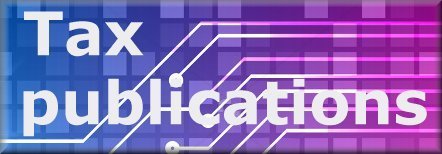

| Degree of exposure to US market |
Type of return or form required |
|
| i) | Receiving US source income that is not effectively connected to a US trade or business Receiving US source income not effectively connected with US generally means that no part of work that is needed to be done in order to provide product or service to US customer is performed in US jurisdiction. That can be the case when Canadian business employs workers in Canada, rents or owns premises in Canada and buys any other essential components or inputs domestically. Assets used by the business are not located in the US, and marketing events, meetings, sales and contracts negotiating activities are conducted in Canada or outside US. |
No US Tax Return is generally required if all tax is properly withheld and reported on forms 1042-S. Under certain conditions filing US Tax Return may be necessary. Please refer to information guide to
Form 1120-F: U.S. Income Tax Return of a Foreign Corporation.
Form W8-BEN-E should be provided to client in order to claim US-Canada treaty benefits and eliminate 30% withholding. Click here for more details on completing the W8-BEN-E form. |
| ii) | Receiving US source income that is effectively connected to a US trade or business without operating thru permanent establishment Receiving US source income effectively connected with US trade or business refers to a situation when business is performing all or part of its work (including work required to complete and deliver the product or service to the US client) in the US jurisdiction. Final product or service that is supplied to US customer is completely or partially made in US. Performing all or part of work in US constitutes engagement in US Trade or Business from the IRS perspective. |
US Tax return required, however tax treaty benefits can be claimed and tax can be paid in Canada only. A completed W8-BEN-ECI form can be required by the US client from Canadian corporation in order to eliminate 30% withholding tax. After the end of the fiscal year Form 1120-F: U.S. Income Tax Return of a Foreign Corporation along with Form 8833: Treaty-Based Return Position Disclosure is generally required to be filed with the IRS. To do that, the corporation needs to apply for EIN using form SS-4. |
| iii) | Receiving US source income that is effectively connected to a US trade or business and earned through permanent establishment Permanent establishment definition includes: - a physical office location in the US - travel of corporate executive to participate in marketing events, hold meetings, sign agreements or perform other key duties - presence of corporation's employee or agent performing business duties in the US for 183 days or more in any 12-month period - providing services with respect to the same project or connected projects for 183 days or more in any 12-month interval |
US Tax return is required, and tax on US-source income is to be paid to IRS. The corresponding tax credit can be claimed on Canadian tax return that is filed to CRA. |
 |

|

|

Disclaimer (2): This and other article(s) text is subject to copyright (c) law and should not be reproduced, whole or in part without ITaccountant.ca written consent.